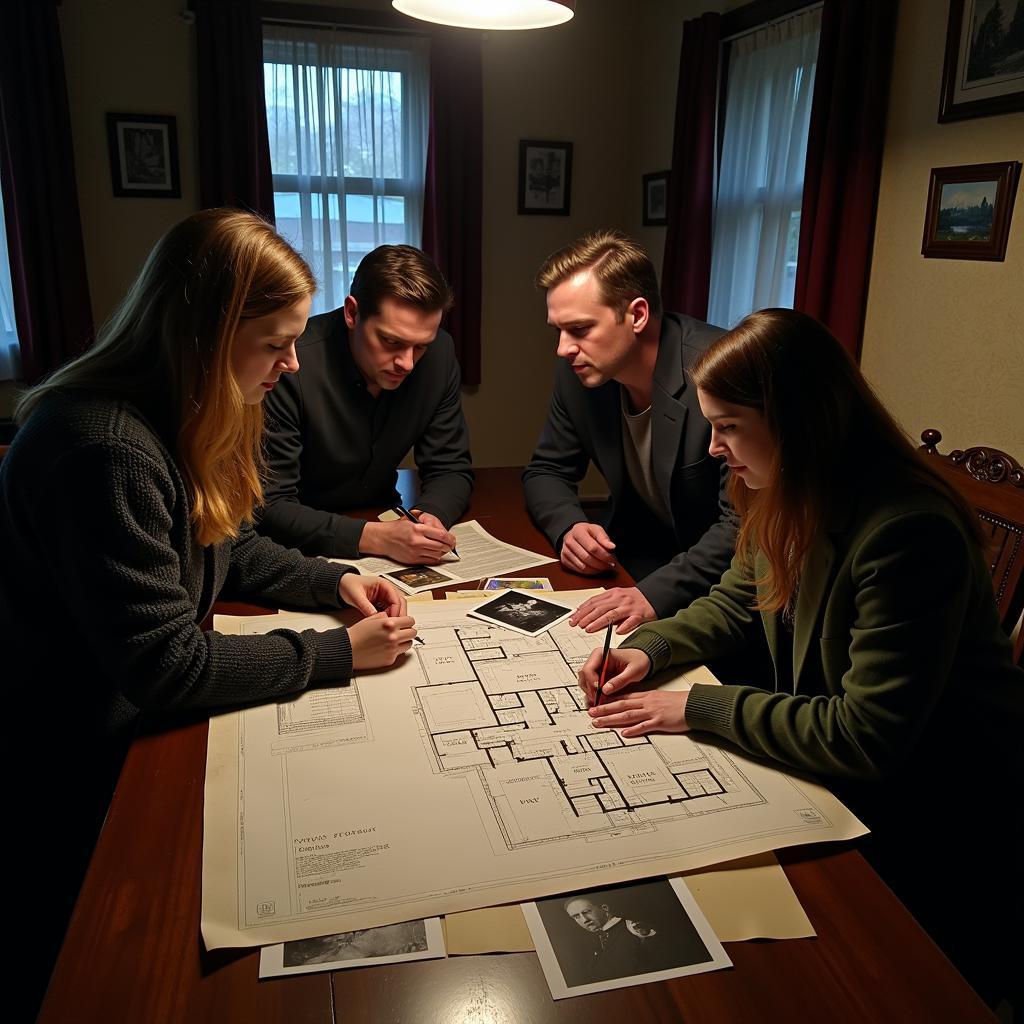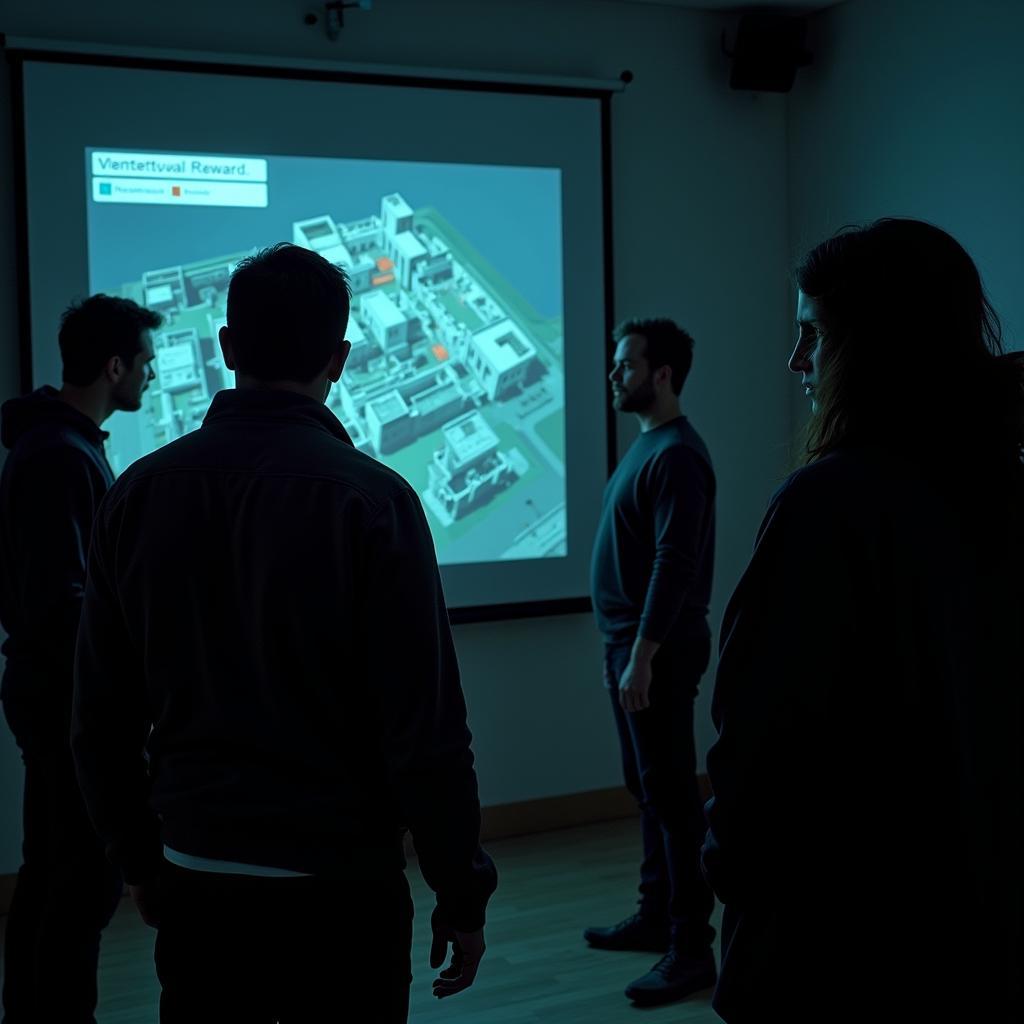Action research is a powerful methodology often employed in fields like education and social work, but did you know it can also be a valuable tool for paranormal investigations? Just like scientists use the scientific method, we can adapt the Stages Of Action Research to systematically investigate and potentially understand unexplained phenomena.
Adapting Action Research for Paranormal Investigation
The core principles of action research, which emphasize cyclical reflection and iterative improvement, make it particularly suitable for navigating the often murky waters of paranormal research. Let’s delve into how each stage can be tailored to this unique field:
1. Planning and Reconnaissance: Laying the Groundwork
Before venturing into the heart of an investigation, thorough planning is crucial.
- Identifying the Anomaly: Clearly define the suspected paranormal activity. Is it an apparition sighting, unexplained noises, or fluctuations in electromagnetic fields?
- Preliminary Research: Dive into historical records, local lore, and previous investigation reports related to the location or phenomenon. Are there recurring patterns or common experiences reported?
- Formulating Hypotheses: Based on your initial findings, develop testable hypotheses. For example, if reports suggest a connection between cold spots and apparition sightings, your hypothesis might be: “Temperature variations in the location are linked to the manifestation of the entity.”
 Paranormal Investigation Planning
Paranormal Investigation Planning
2. Action and Observation: Encountering the Unknown
This stage involves active data collection and interaction with the potential paranormal phenomena.
- Data Collection: Utilize various tools and techniques: EMF meters, EVP recorders, infrared cameras, and even dowsing rods. Employing both traditional and scientific methods can provide a more holistic understanding.
- Controlled Experiments: Design experiments to test your hypotheses. For example, you could attempt communication with the alleged entity during periods of heightened EMF activity.
- Detailed Documentation: Maintain meticulous records of all observations, data readings, and experiences. Time-stamped notes, audio logs, and photographs are essential.
3. Reflection and Analysis: Deciphering the Evidence
This crucial stage is where you sift through the collected data, searching for meaningful patterns and insights.
- Data Review and Interpretation: Analyze all collected data – audio recordings, photographs, EMF readings, etc. – for any anomalies or patterns.
- Cross-Referencing: Compare your findings with existing paranormal research and case studies. Do your observations align with known phenomena or suggest something entirely new?
- Critical Evaluation: Maintain a healthy skepticism throughout the analysis. Are there any alternative explanations for the observed phenomena?
4. Action Planning and Modification: Refining the Approach
Based on your analysis and reflections, the next step is to refine your approach and develop further action steps.
- Adjusting Hypotheses: Do your initial hypotheses hold up after analyzing the data? You may need to modify, expand, or even discard initial assumptions.
- Developing New Strategies: Based on your findings, consider what new tools, techniques, or research avenues might be helpful in further investigating the phenomena.
- Planning for Future Investigations: Outline the next steps in your investigation. Should you conduct follow-up interviews, revisit the location with refined equipment, or consult with specialists in relevant fields?
 Paranormal Action Planning
Paranormal Action Planning
Embracing the Cyclical Nature of Action Research
The beauty of action research lies in its cyclical nature. Each cycle of planning, action, reflection, and modification brings you closer to understanding the truth behind the paranormal phenomena you are investigating. While definitive answers might remain elusive, embracing this systematic and reflective approach can lead to a deeper understanding of the unknown.
Conclusion: Unveiling Mysteries One Step at a Time
Just like any scientific endeavor, Paranormal Research demands a structured and critical approach. By adapting the stages of action research, investigators can move beyond subjective experiences and anecdotal evidence, striving for a more objective and insightful understanding of the mysteries that lie beyond our current perception.
Do you have any personal experiences with paranormal phenomena that you’ve investigated using a systematic approach? Share your thoughts in the comments below!